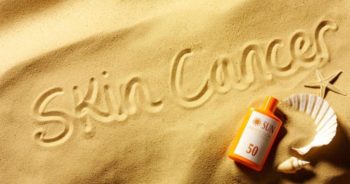 SPOT IT AND STOP IT!
SPOT IT AND STOP IT!
Welcome to FACTUAL FRIDAY everyone. It’s May, spring is in full swing, and it also is SKIN CANCER AWARENESS MONTH. Accordingly, this is the time of year we review important information about this very common cancer and the ways in which we can protect ourselves.
You see, skin cancer is one of three cancers with which I have been diagnosed. Fortunately, mine were caught early and were treated successfully. But, even though I’ve been “skin cancer free” for several years now, I have to remain vigilant in order to prevent a recurrence or, at the very least, to catch a new cancer early and treat it immediately.
It’s a simple matter of being informed. So, let’s discuss some facts and tips about skin cancer that can help you protect yourself and your loved ones.
To begin, there are three types of skin cancer. In order of seriousness, they include basel cell, squamous cell and melanoma. And, when all three are combined, skin cancer becomes the most common cancer in the world.
Of course, it’s the third type of skin cancer, melanoma, that is the most dangerous. Indeed, in this country one American dies from melanoma every hour – and the rates of this cancer have doubled in the United States since 1982. And, while those over the age of 50 used to share the greatest risk for melanoma, today it’s becoming more and more common in individuals in their early 20s and teens.
So, no matter what our age, we need to arm ourselves with the proper information and learn the basics of skin cancer prevention.
To begin, skin cancer is caused by over-exposure to ultraviolet light or UV rays, which are an invisible kind of radiation that comes from the sun, tanning beds and sunlamps. These rays penetrate skin cells, change skin texture, cause premature aging and wrinkling, damage the tissue and compromise the integrity of our DNA.
And, there are 3 TYPES OF UV RAYS, including:
- ULTRAVIOLET A (UVA). This is the most common and dangerous type of UV ray. These rays travel deep into human skin and damage the skin’s connective tissue as well as its DNA.
- ULTRAVIOLET B (UVB). Most UVB rays are absorbed by the earth’s ozone layer, so they are less common and troublesome that UVA rays. They do not reach as deep into the skin as UVA rays, but they still can cause sunburn and damage our DNA.
- ULTRAVIOLET C (UVC). These rays can be extremely dangerous to living tissue. Fortunately, however, they are absorbed completely by the earth’s ozone layer and as a result, pose no threat to human skin in everyday situations.
Okay, so UVA and UVB are the types of UV rays that cause the most damage to our skin. Now, for a few more facts we need to know:
1) BOTH UVA and UVB rays occur outdoors AND indoors.
2) BOTH can penetrate glass.
3) BOTH can reach you on cloudy, hazy days as well as bright, sunny days.
4) And, BOTH reflect off water, snow, sand and even cement.
Great! Now, that we know what UV rays are, we need to know what the 6 DIFFERENT TYPES OF SKIN are and how each is affected by these rays. So, here we go in order from the most sensitive skin type to the least sensitive:
1) Always burns, never tans.
2) Burns easily, tans minimally.
3) Burns moderately, tans gradually to light brown.
4) Burns minimally, tans well to moderately brown.
5) Rarely burns, tans easily to dark brown.
6) Never burns, dark pigmentation.
Clearly, those with skin types 1 and 2 are at the greatest risk for developing all skin cancers, while those with skin types 5 and 6 have the least risk.
Yet, always remember – EVERYONE is at risk for skin cancer, even those with dark skin that never burns. AND, skin cancer can occur on parts of the body that rarely see the sun or UV rays, including the skin between our toes and the soles of our feet 😊
So, when it comes to skin cancer, you have just created a great foundation for understanding the subject and protecting yourself.
You know what UV rays are. You know where they’re found and how they affect the environment. And, you know the type of skin you have and how sensitive it is to these rays.
With these basics down, we’ll continue our discussion of SKIN CANCER AWARENESS MONTH next time by reviewing 9 MAJOR RISK FACTORS and a few IMPORTANT TIPS to help protect us from this disease.
Until then everyone, many thanks for joining me, stay in GOOD HEALTH and . . .
TAKE THE COURSE AND TAKE CHARGE!



Leave a Comment